SZPHOTON
ガラスコア基板
ガラスコア基板
合計金額(下記の数量に基づく)
下記製品は弊社在庫品での評価用製品です。量産にはカスタマイズが必要となります。
受取状況を読み込めませんでした
ガラスコア基板は、チップパッケージングの世界における革新的な新技術です。従来の有機基板からの大きな飛躍であり、さらに強力で複雑な集積回路 (IC) の時代を先導するものと期待されています。
有機材料ではなくガラスをコアとして作られたこれらの基板は、優れた安定性、優れた放熱性、改善された電気性能など、いくつかの重要な利点を備えています。これにより、1 つのチップにより多くのトランジスタを詰め込むことが可能になり、処理速度が速くなり、より強力なデバイスが実現します。
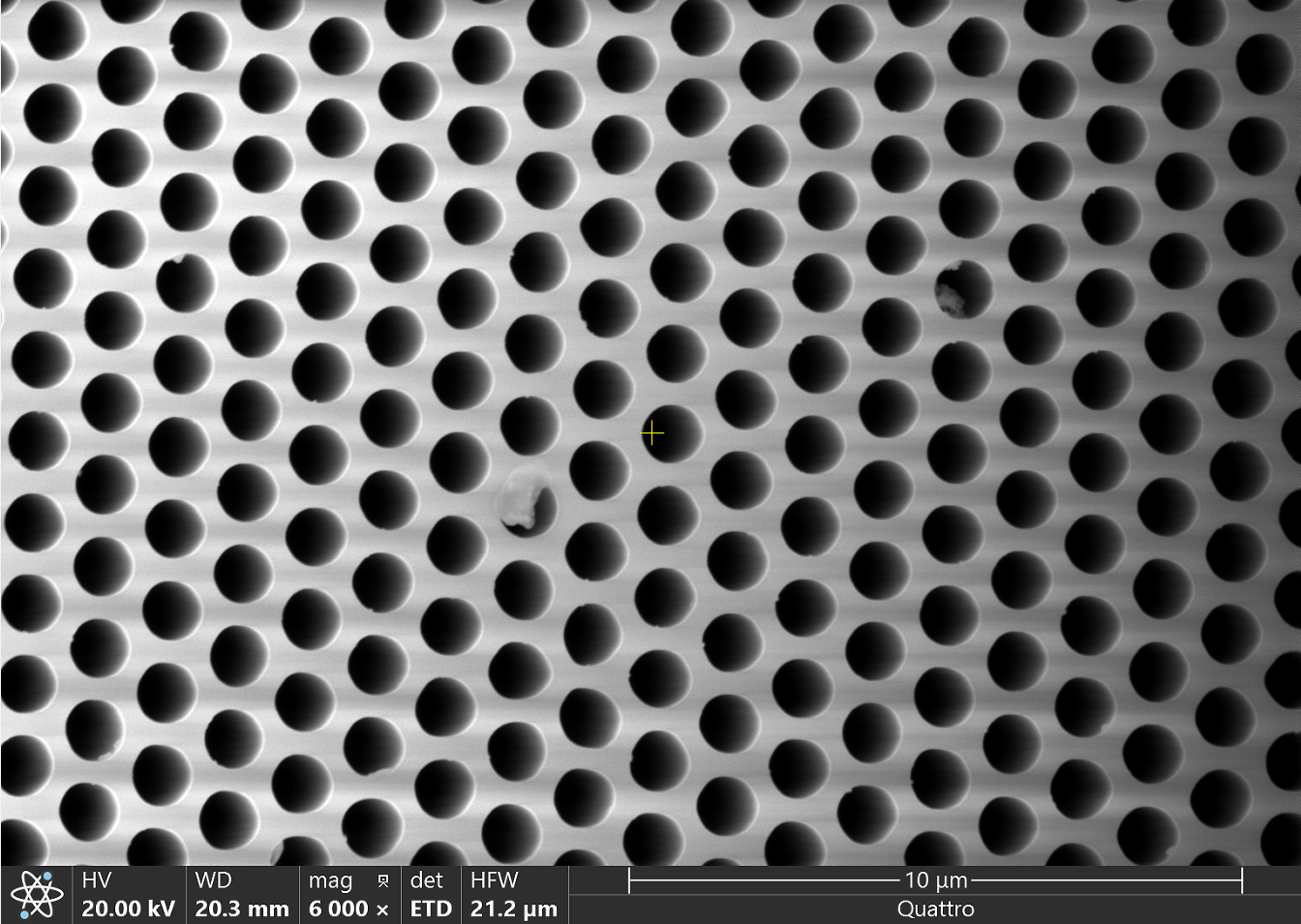
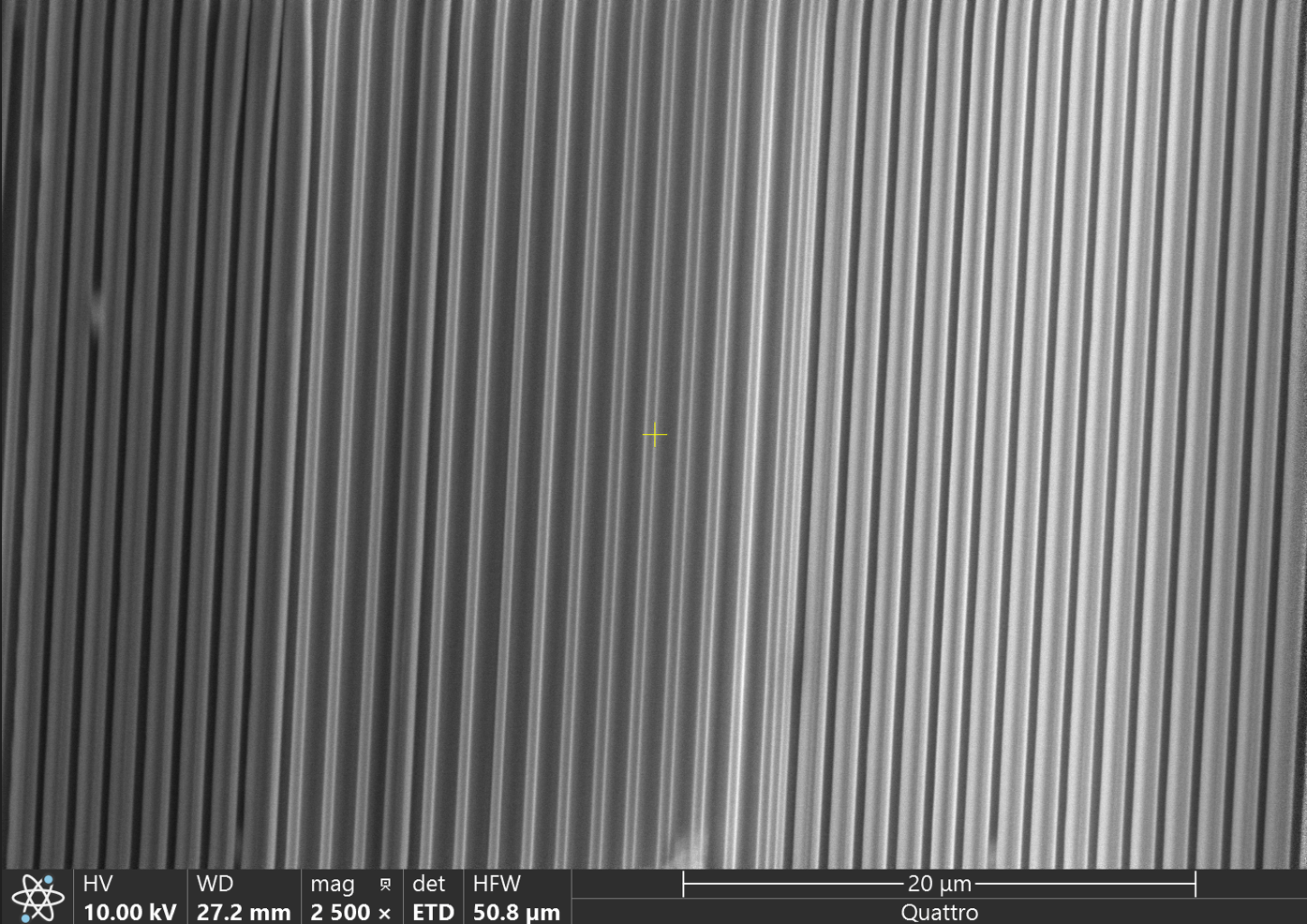
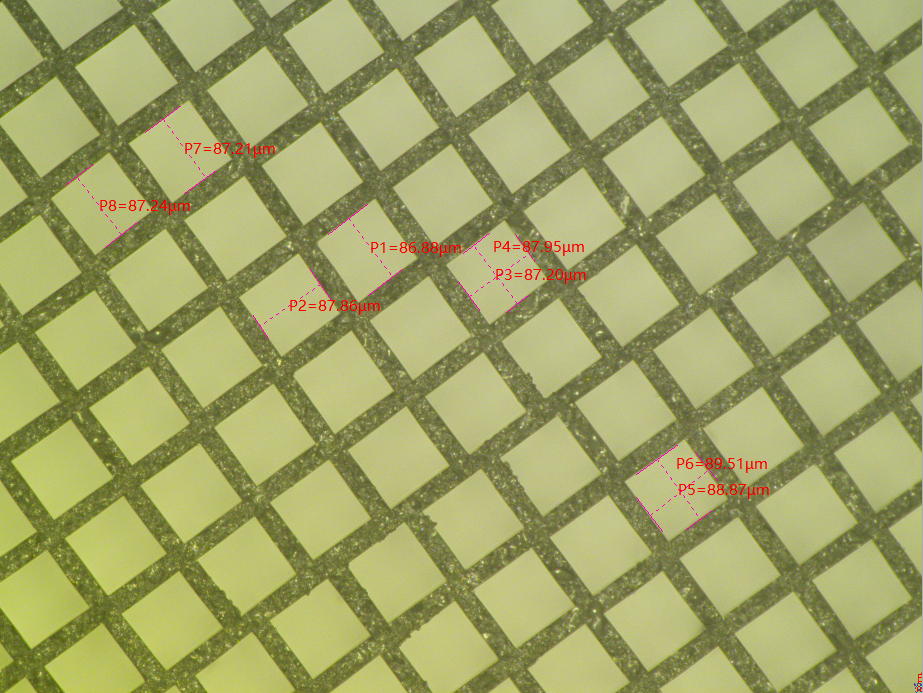
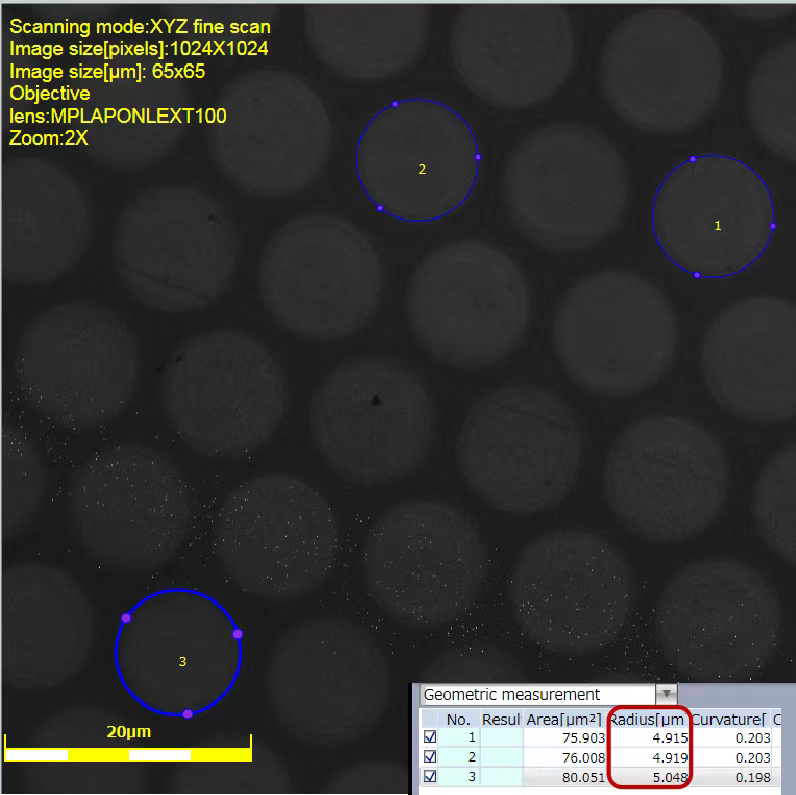
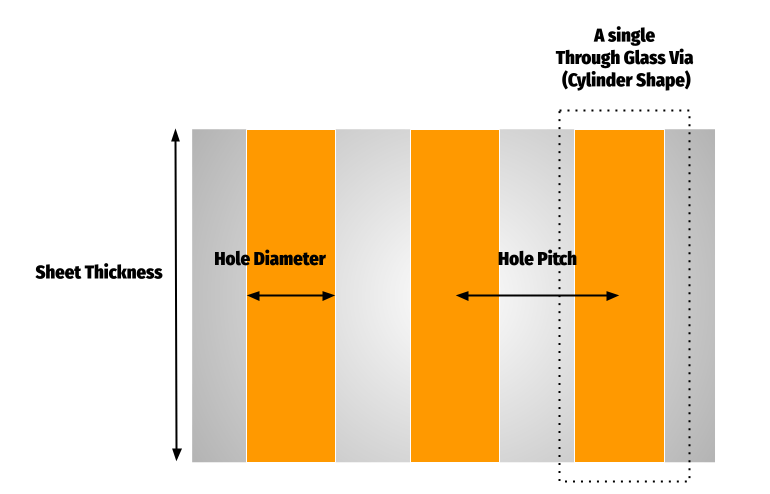
標準仕様
-
材料
ホウケイ酸ガラス(標準)
- 熱膨張係数 (CTE) = 3 - 9
- 密度 = 4.1 - 6.3g/cm3
- 鉛フリー: いいえ
-
穴径/ピッチ
使用可能な穴径
- 1.5um(最小)
- 100um(高範囲)
穴ピッチ
- 2 x 穴径(標準)
- 1.25 x 穴径(低範囲)
-
シート寸法/厚さ
シートの厚さ
- 0.3mm(標準)
- 0.2mm(低域)
利用可能なシート寸法
- 25 x 25mm (コスト -)
- 100x100mm(コスト++)
- 150x150mm (コスト+++)
さらなる詳細
-

コーティング
ビアの壁面にコーティングを施すことも可能です。
(グラフのピンク色の部分)
-
品質管理項目
出荷前に確認をお願いできる項目は以下の通りです。
- 外観検査
- 検索エンジン最適化
- 厚さ許容差
- 総厚さの変化
- ワープ
よくある質問
サンプルのその他の仕様を入手できますか?
はい、可能ですが、その場合コストは高くなります。最低でも5,000ドルかかります。
価格を下げる可能性はありますか?
はい、弊社の加工技術により、寸法が小さい場合(<直径26mm)は価格を下げることができます。
また、当社は高度な機械加工にはあまり対応していません。表面処理の要件が高いと、価格も大幅に上昇する可能性があります。
Viaテーパー形状は作れますか?
いいえ、原材料と加工方法の都合上、Via(TGV)をテーパー形状にすることはできません。
Angle に付属する Via は必要ですか?
いいえ、必要ありません。角度の付いたビアよりも、まっすぐなビアのほうが優れています。
ビア径dの影響を調べるために、3つの値(50μm、100μm、200μm)を割り当て、他の変数はh = 500μmと一定に保ちました。 = 90°。結果から、ビア直径のこの変化は、10 GHz まではビアの挿入損失に大きな影響を与えないことがわかります。この周波数を超えると、200 μm ビアの挿入損失は大幅に低下します (50 GHz で約 60% の電力が伝送されます)。50 μm ビアと 100 μm ビアの伝送係数は、全帯域幅にわたって 85% 以上を維持します。

ガラスコア基板の利点
ガラスコア基板は、特に高性能アプリケーションにおいて、従来のシリコンベース基板に比べていくつかの重要な利点があります。
熱安定性: ガラスは、反りや劣化を起こさずに高温に耐えることができます。これは、強力なチップの熱管理に不可欠です。これにより、トランジスタをより密に詰め込み、全体的なパフォーマンスを向上させることができます。
信号の完全性: ガラスは熱膨張係数 (CTE) が低く、シリコン自体に近い特性を持っています。これにより、温度変化時の電気接続にかかるストレスが軽減され、より高速で信頼性の高い信号伝送が可能になります。
より小さなビア: ガラスはより厳しい許容誤差に対応できるため、より小さなビア (電気接続用の穴) を作成でき、パッキング密度と信号速度が向上します。
光学的透明性: 常に関連するわけではありませんが、一部のアプリケーションではガラスの透明性がメリットとなり、光学コンポーネントや光ベースのセンサーを統合できるようになります。
お問い合わせ
参照
すべてを表示する-

パッシブアセンブリ用の高密度垂直光インターコネクト
引用 D. Weninger、S. Serna、A. Jain、L. Kimerling、および A. Agarwal、「パッシブアセンブリ向け高密度垂直光インターコネクト」、 Opt. Express 、vol. 31、no. 2、pp. 2816–2831、2023年1月。 キーワード 垂直光インターコネクト 共パッケージ光学部品 チップ間結合 ダブルテーパー アライメント許容範囲 シリコンフォトニクス 光インターポーザ パッシブアセンブリ エバネッセント結合 簡単な この記事では、共パッケージ化された光学系において、効率的で高密度、かつアライメント許容範囲の広いチップ間結合を実現するために、重なり合う逆ダブルテーパを使用した新しい垂直光相互接続設計を紹介します。 まとめ 2023年にOptics Expressに掲載された記事「パッシブアセンブリのための高密度垂直光相互接続」では、光導波路を垂直に接続するための新しい設計が提案されています。著者のDrew Weninger、Samuel...
パッシブアセンブリ用の高密度垂直光インターコネクト
引用 D. Weninger、S. Serna、A. Jain、L. Kimerling、および A. Agarwal、「パッシブアセンブリ向け高密度垂直光インターコネクト」、 Opt. Express 、vol. 31、no. 2、pp. 2816–2831、2023年1月。 キーワード 垂直光インターコネクト 共パッケージ光学部品 チップ間結合 ダブルテーパー アライメント許容範囲 シリコンフォトニクス 光インターポーザ パッシブアセンブリ エバネッセント結合 簡単な この記事では、共パッケージ化された光学系において、効率的で高密度、かつアライメント許容範囲の広いチップ間結合を実現するために、重なり合う逆ダブルテーパを使用した新しい垂直光相互接続設計を紹介します。 まとめ 2023年にOptics Expressに掲載された記事「パッシブアセンブリのための高密度垂直光相互接続」では、光導波路を垂直に接続するための新しい設計が提案されています。著者のDrew Weninger、Samuel...
-

レーザー誘起ディープエッチングにより作製したガラスマイクロウェルにおける生きた単一細胞イメージ...
引用 Sandström, N., Brandt, L., Sandoz, PA, Zambarda, C., Guldevall, K., Schulz-Ruhtenberg, M., Rösener, B., Krüger, RA, & Önfelt, B. (2022). レーザー誘起ディープエッチングによって作製されたガラスマイクロウェルでのライブ単一細胞イメージングアッセイ。Lab on a Chip 、 22、2107 。 キーワード レーザー誘起ディープエッチング(LIDE)...
レーザー誘起ディープエッチングにより作製したガラスマイクロウェルにおける生きた単一細胞イメージ...
引用 Sandström, N., Brandt, L., Sandoz, PA, Zambarda, C., Guldevall, K., Schulz-Ruhtenberg, M., Rösener, B., Krüger, RA, & Önfelt, B. (2022). レーザー誘起ディープエッチングによって作製されたガラスマイクロウェルでのライブ単一細胞イメージングアッセイ。Lab on a Chip 、 22、2107 。 キーワード レーザー誘起ディープエッチング(LIDE)...
-

3D異種集積受動デバイス技術に基づく優れた選択性を備えた小型広帯域バンドパスフィルタ
引用 Zhou, Y., et al.: 3D異種集積受動デバイス技術に基づく優れた選択性を備えた小型広帯域バンドパスフィルタ。IET Microw. Antennas Propag. 18(4), 266–271 (2024). https://doi.org/10.1049/mia2.12447 キーワード 5Gモバイル通信 集積回路設計 電子レンジ 広帯域バンドパスフィルタ 3D異種集積受動デバイス技術 周波数選択性 広いストップバンド GaAsベース ガラスベース マイクロナノスケールプロセス 品質要因 挿入損失 伝送ゼロ(TZ) 異種統合 フリップチップボンディング ボールグリッドアレイ(BGA)...
3D異種集積受動デバイス技術に基づく優れた選択性を備えた小型広帯域バンドパスフィルタ
引用 Zhou, Y., et al.: 3D異種集積受動デバイス技術に基づく優れた選択性を備えた小型広帯域バンドパスフィルタ。IET Microw. Antennas Propag. 18(4), 266–271 (2024). https://doi.org/10.1049/mia2.12447 キーワード 5Gモバイル通信 集積回路設計 電子レンジ 広帯域バンドパスフィルタ 3D異種集積受動デバイス技術 周波数選択性 広いストップバンド GaAsベース ガラスベース マイクロナノスケールプロセス 品質要因 挿入損失 伝送ゼロ(TZ) 異種統合 フリップチップボンディング ボールグリッドアレイ(BGA)...








